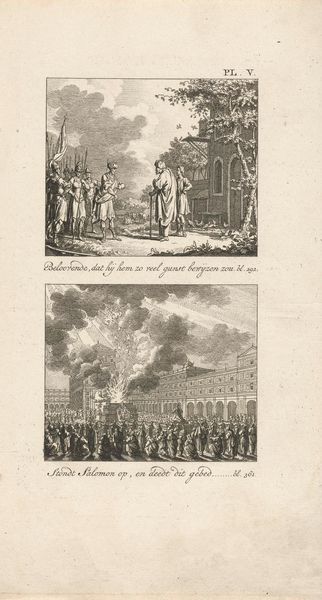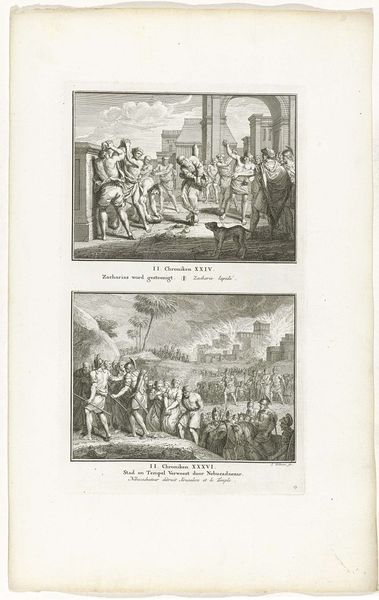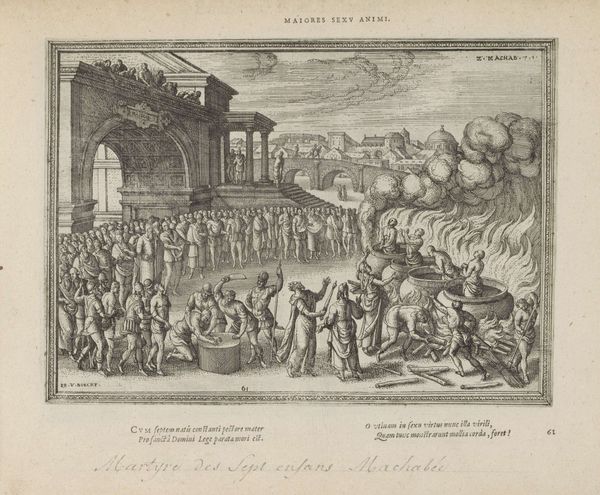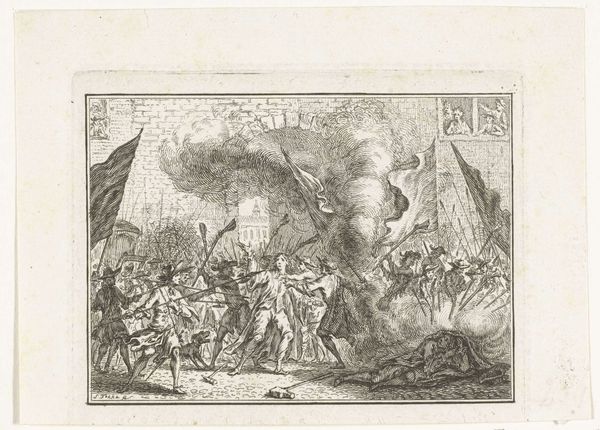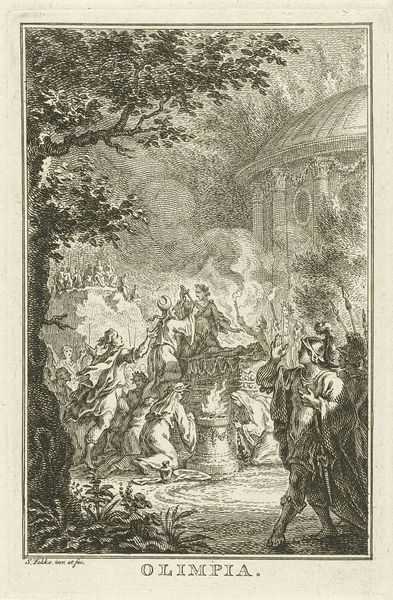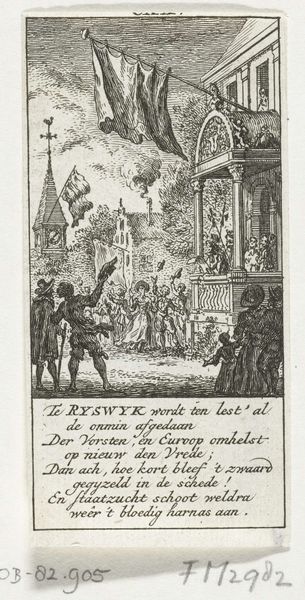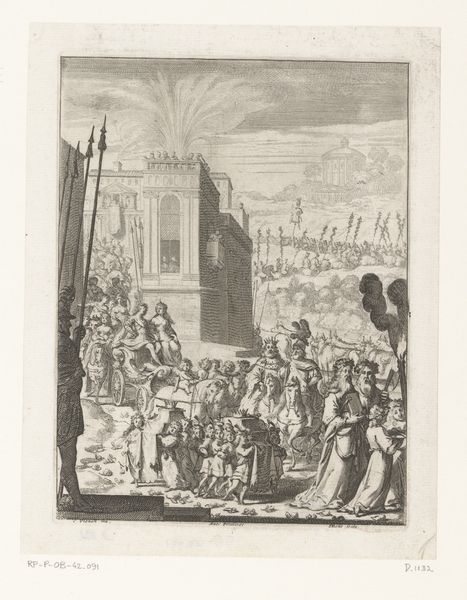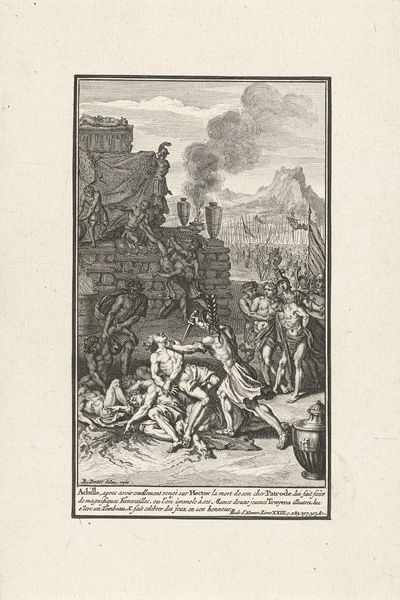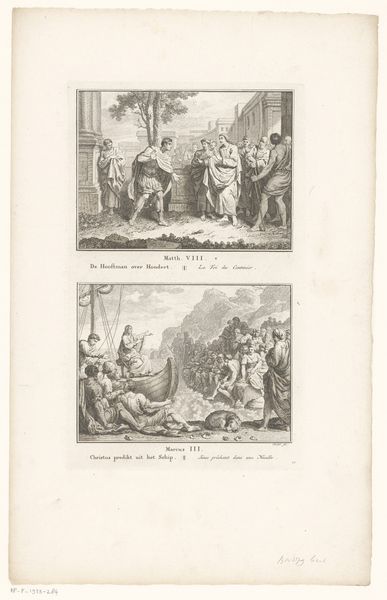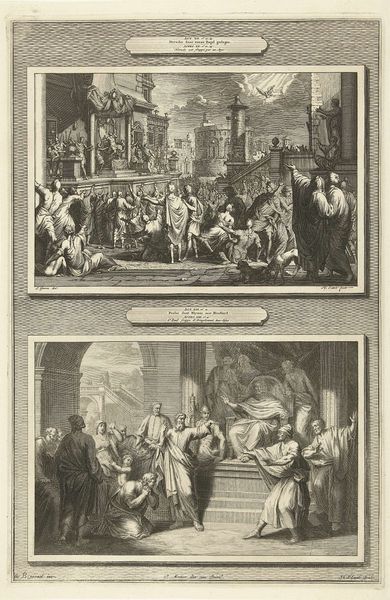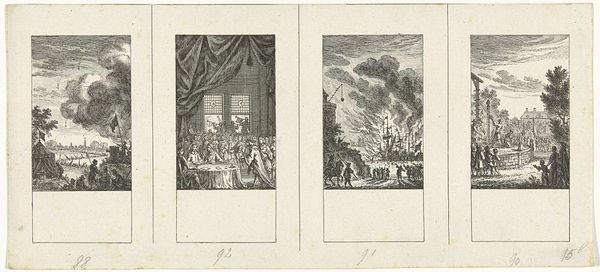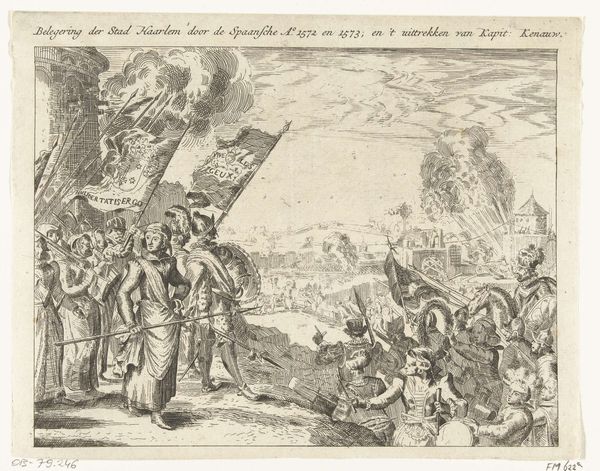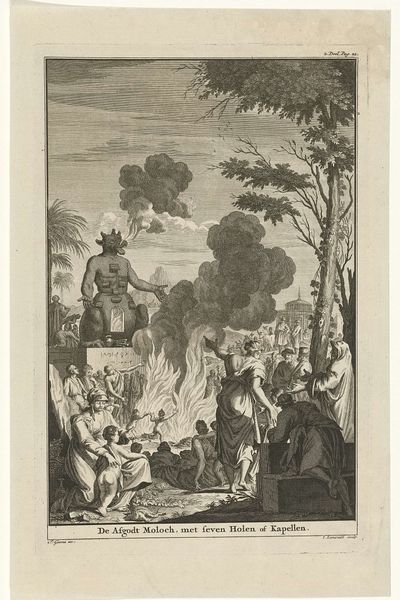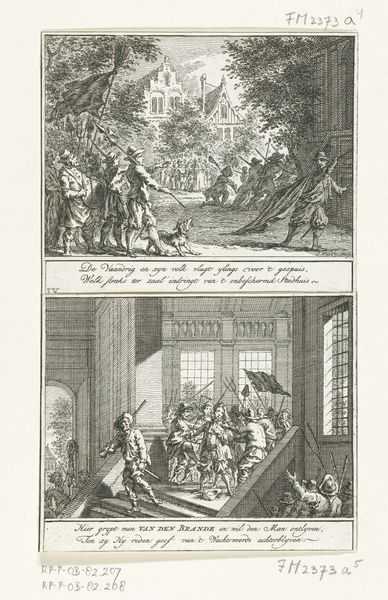
Grote Pier maakt de Zuiderzee onveilig, 1516, en Vrede van Kamerijk, 1529 1784
0:00
0:00
simonfokke
Rijksmuseum
Dimensions: height 177 mm, width 111 mm
Copyright: Rijks Museum: Open Domain
Curator: Looking at this print from 1784 by Simon Fokke, titled "Grote Pier makes the Zuiderzee unsafe, 1516, and the Peace of Cambrai, 1529," I am immediately struck by the visual dichotomy; the contrast is quite pronounced, isn’t it? Editor: Indeed. My initial impression is one of dramatic conflict followed by serene resolution. The upper scene crackles with dynamic energy – the sea churning, ships battling, smoke billowing. But beneath it, the lower register feels like a tableau of formal stillness, an almost ceremonial hush settling over the figures. Curator: Let’s begin with the upper panel which portrays Pier Gerlofs Donia, the Frisian warrior also known as Grote Pier, raiding ships on the Zuiderzee. This image certainly feeds into narratives of resistance against foreign occupation. We have to consider that this print was made much later than the events it depicts, and perhaps romanticizes earlier struggles. How does that impact its message for viewers in the 18th century? Editor: The symbolic importance of Pier as a defiant figure resonates clearly even now. Looking at how he's positioned, spear in hand, amidst the chaos— it evokes a classical hero figure but localized, grounded in Dutch history. The engraver skillfully uses the dense, hatched lines to generate that feeling of tumultuous action. You can almost hear the clash of steel and shouts over the waves. Curator: Exactly, and underneath it, the "Peace of Cambrai." Though seemingly removed from the naval battle, consider the implications: treaties are frequently the result of violent conflict. They attempt to redefine power dynamics and to address identity from different angles, and frequently at the expense of vulnerable people. Editor: I find the lower half so compelling. The careful staging, the measured gestures. A visual language that conveys concord, and closure after war. I note how light seems to illuminate the central figures signing the treaty, highlighting them. It presents not only historical reconciliation, but divine favor too. Curator: I see your point. The composition certainly suggests a restoration of order and, by extension, a renewed national identity after periods of internal and external strife. Both panels are not just depictions of specific historical events but symbolic representations of larger struggles, a story of war and peace, so to speak. Editor: Precisely. When viewed together, one begins to discern those layers of conflict, adaptation, and a cyclical history so well articulated. Curator: It's certainly given me some food for thought. Editor: For me too. Looking deeper really unlocks new readings.
Comments
No comments
Be the first to comment and join the conversation on the ultimate creative platform.
